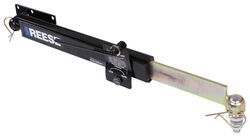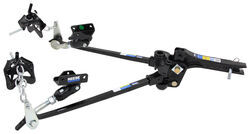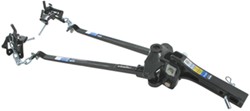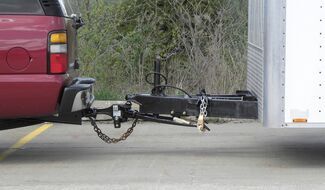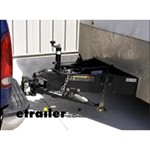
How to Choose a Trailer Sway Control Solution
Question:
What antisway device would you recommend? Any you csn back up without the need to disconnect?
asked by: Bob S
Expert Reply:
The anti-sway solution you need will depend on the weight, length and trailer you're towing. If you're towing a smaller flatbed utility type trailer that gets a little unstable from time to time, and moving more tongue weight to the front of the trailer isn't improving the swaying condition, then an entry-level solution like the Reese Friction Sway Control, part # 83660 would be a good choice. For trailers longer than 25 feet, you can actually use two units, one on each side if necessary. The Reese Sway Control would work well with the Reese # RP66541 you were looking at. Disconnecting this type of sway control unit before backing the trailer is a must, or you can damage the sway control units.
Longer, heavier enclosed trailers or campers will have a much larger surface area for the wind and the turbulence from passing traffic to act against. A swaying trailer can turn a relaxing vacation stressful in an instant. The Reese Strait-Line system, part # RP66083 combines weight distribution which is appropriate for trailers with tongue weights ranging from 400-800 lbs with outstanding sway control performance. The Strait-Line system forces the trailer to follow in a straight line behind the tow vehicle, and will prevent sway from occurring before it can begin. When backing the trailer normally, you wouldn't need to remove the spring bars, but if you're backing at an extreme angle where there's a potential of jackknifing the trailer, removing the bars is recommended to prevent possible damage.
In order to choose the proper sway control/weight distribution system, you'll need to first determine the fully loaded and ready to tow tongue weight of your trailer. To that figure, add the weight of any gear stowed in the cargo area of the SUV or truck bed behind the rear axle. I've linked to an FAQ article that explains how to do this. These combined figures represent the Total Tongue Weight (TTW) of your set-up. The TTW of your trailer should fall as close as possible to the middle of the effective range of the weight distribution system you choose.

Products Referenced in This Question
Reese Friction Sway Control Kit - Economy - by Draw-Tite, Reese and Hidden Hitch
- Accessories and Parts
- Weight Distribution Hitch
- Sway Control Parts
- Reese
more information >
Strait-Line Weight Distribution System w/ Sway Control - Trunnion Bar - 8,000 lbs GTW, 800 lbs TW
- Weight Distribution Hitch
- WD With Sway Control
- Some Sway
- Includes Shank
- Electric Brake Compatible
- Fits 2 Inch Hitch
- Allows Backing Up
- 500 lbs
- 600 lbs
- 700 lbs
- Reese
more information >
Product Page this Question was Asked From
Reese Weight Distribution System w Shank - Trunnion Bar - 8,000 lbs GTW, 800 lbs TW
- Weight Distribution Hitch
- WD Only
- No Sway
- Includes Shank
- Electric Brake Compatible
- Fits 2 Inch Hitch
- 600 lbs
- 700 lbs
- Reese
more information >
Featured Help Information
Instructions
Miscellaneous Media

Continue Researching
- Article: Which Sway Control Hitch is Right For Your Trailer?
- Article: 2 Steps for Finding the Right Weight Distribution Hitch Size
- Article: 5 Things to Know About Weight Distribution Hitches
- Article: Determining Trailer Tongue Weight
- Article: 5 Tips to Confidently Choose Your Weight Distribution Hitch
- Article: How to Measure for Trailer Hitch Drop
- Q&A: Does Optronics LED Clearance or Side Marker Light # 00212336P have a Reflector
- Q&A: Choosing a Weight Distribution System for a 2006 Toyota Sequoia
- Q&A: Trailer Hitch Extension for Use Behind a Truck Bed Camper
- Q&A: What is the Best Grease for Trailer Bearings
- Q&A: Can You Back Up with a Curt Weight Distribution System Installed
- Q&A: Trailer Wiring Needed for 2017 Chevy Traverse with Rear Air Conditioning Unit
- Q&A: Availability of Weight Distribution for 1-1/4 Inch Receivers



